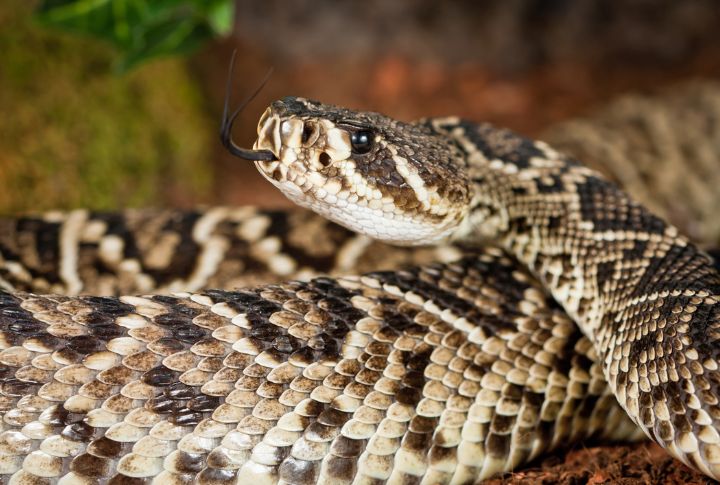
Snakes are some of the most fascinating and diverse creatures inhabiting the United States. While some species are harmless, others are equipped with deadly toxins, demanding respect and caution. This guide explores 15 of the most popular species across the USA, each with peculiar features and habitats, contributing to the nation’s rich ecosystem.
Eastern Diamondback Rattlesnake
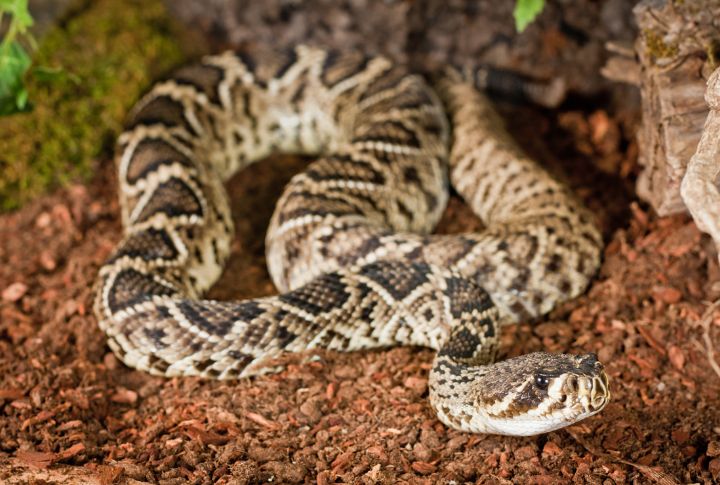
The Eastern Diamondback Rattlesnake is renowned for its imposing size, strong poison, and distinctive rattling warning. Characterized by its diamond-shaped patterns along its back, this formidable serpent can grow to lengths exceeding 7 feet and weigh up to 15 pounds. Irrespective of its fearsome reputation, the Diamondback is generally reclusive and will avoid confrontation when possible.
Timber Rattlesnake
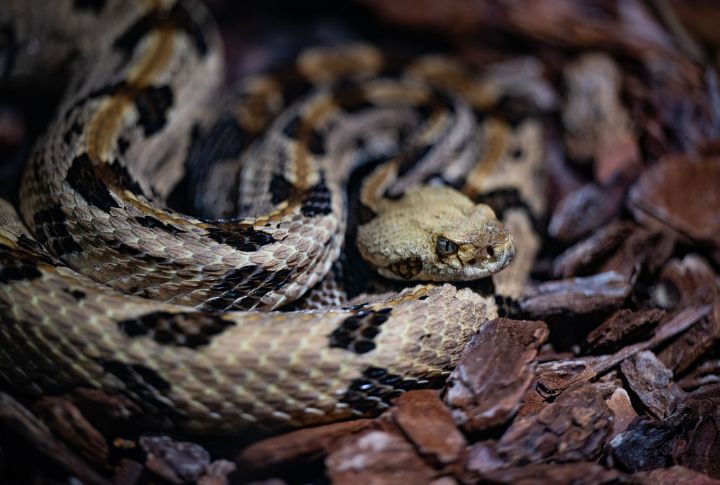
Known for its thick body and triangular-shaped head, the Timber Rattlesnake has different colors that help it blend perfectly into its natural environment. As an ambush predator, it preys on mice, chipmunks, and rabbits, using its venom to immobilize and digest them. Despite its dangerous nature, this snake typically avoids humans and will usually retreat if given the chance.
Western Diamondback Rattlesnake
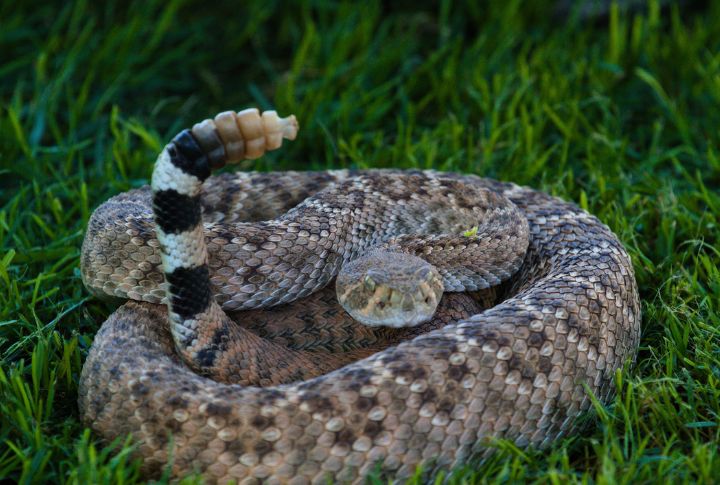
The Western Diamondback Rattlesnake has unique diamond-shaped markings along its back. This rattlesnake species predominantly lives in arid regions across the southwestern United States, including Texas and Arizona. As an ambush predator, it waits for its victims, which include rodents and rabbits. Its poison is potent and composed of hemotoxins, which break down blood cells and tissue.
Copperhead
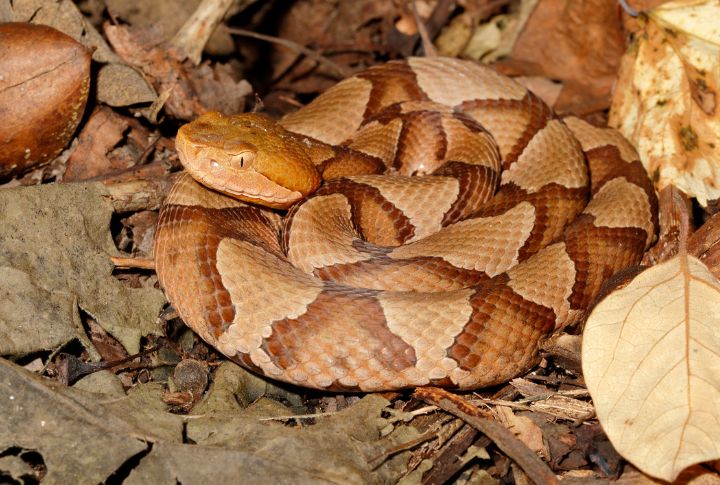
Found in forests, rocky places, and grasslands, the Copperhead is a master of camouflage, blending into its surroundings with its cryptic coloring. Measuring between 2 and 3 feet and sometimes longer, the Copperhead has a stout body and a broad, triangular-shaped head. Its poison is rarely fatal to humans, with bites only resulting in painful swelling and tissue damage.
Cottonmouth
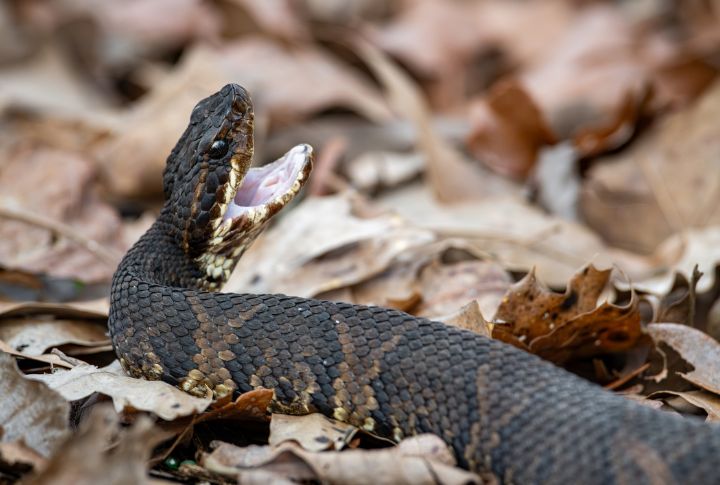
Named for the distinctive white lining of its mouth, this species stays in and around aquatic habitats such as swamps, marshes, and slow-moving streams. As skilled hunters, they mainly feed on fish, amphibians, and birds. They use their potent toxin to subdue their victims rather than for defense. If frightened, they can deliver a potentially dangerous bite.
Eastern Coral Snake
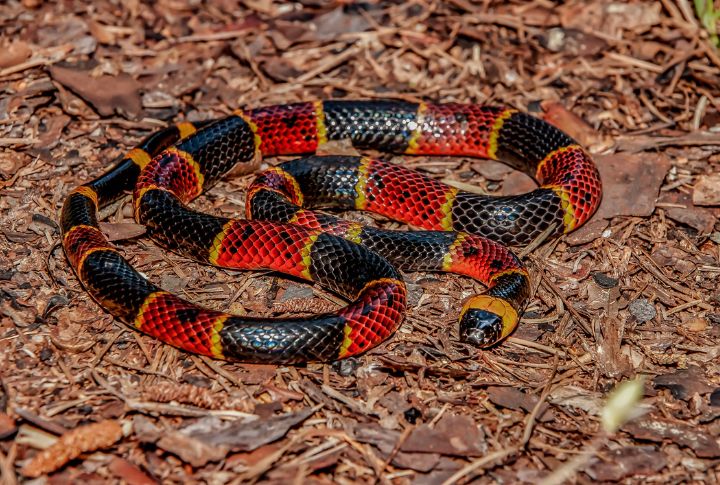
Recognized by its red, yellow, and black bands encircling its slender body, this species is often mistaken for the non-venomous Scarlet Kingsnake. Encountering an Eastern Coral Snake in the wild is rare due to its reclusive nature and preference for secluded places. Coral snakes have potent neurotoxins in their venom.
Western Coral Snake
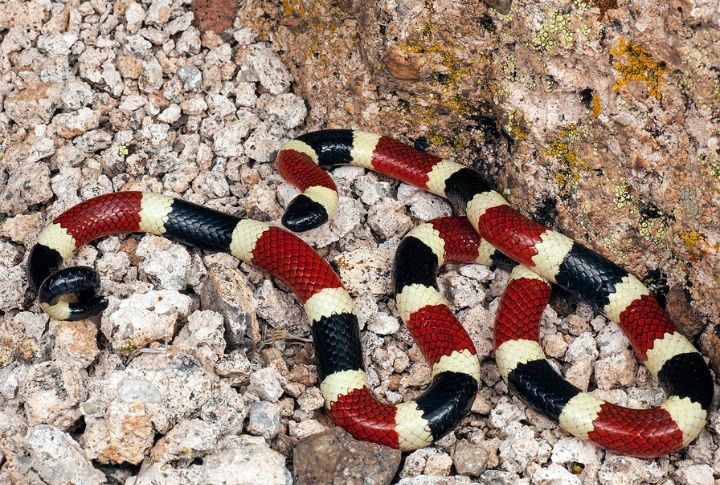
The Western Coral Snake is identifiable by its red, yellow, and black bands around its body. Generally found in desert scrub, grasslands, and rocky environments, it is a secretive and elusive species, often burrowing underground or hiding beneath surface debris. This reptile preys primarily on tiny reptiles and amphibians and uses its toxin to immobilize its victims before consuming them.
Garter Snake
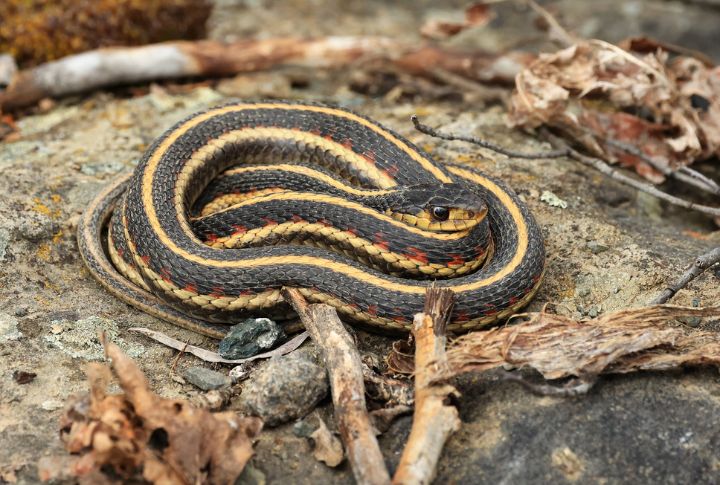
These slender reptiles have colorful patterns running along their bodies, ranging from green or brown to yellow or orange. They are popular because they adapt to habitats like forests, grasslands, marshes, and suburban areas. Despite their familiar presence, Garter Snakes are non-venomous and rarely bite unless angered. Instead, they rely on their speed to escape predators.
Bullsnake
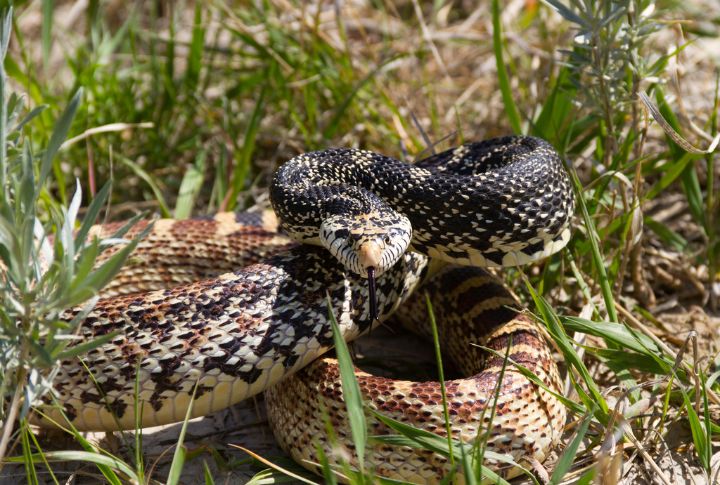
The Bullsnake is a non-poisonous snake species native to North America. Famous for its impressive size and attractive appearance, the Bullsnake typically measures 4 to 8 feet long. Its ability to mimic the behavior of rattlesnakes when agitated is remarkable. Yet, despite this intimidating display, Bullsnakes are harmless to people and play a valuable role in controlling rodent populations.
Black Rat Snake
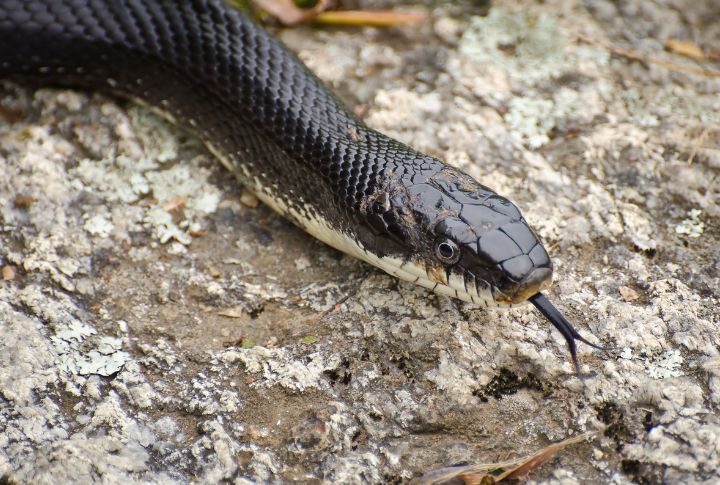
The Black Rat Snake is highly adaptable, exhibiting a glossy black coloration on its back. Their underbelly is lighter, sometimes featuring a creamy hue. These snakes are proficient climbers, frequently seeking refuge in trees or elevated structures. They are also skilled hunters and use their keen sense of smell and incredible vision to locate and capture prey.
Eastern Hognose Snake
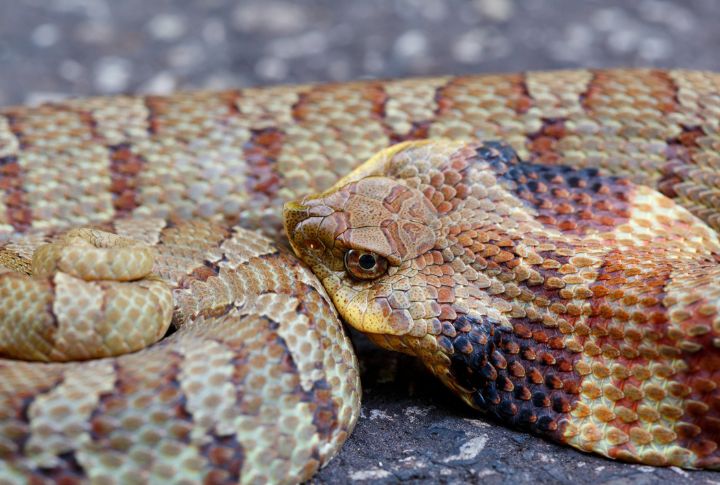
The Eastern Hognose Snake’s distinctive identity is its upturned snout, giving it a pig-like appearance. It feeds on toads, immobilizing them with mild venom. When frightened, the snake will flatten its head, imitating a cobra. If this fails to deter the aggressor, it may hiss loudly, flatten its body, and play dead.
Western Hognose Snake
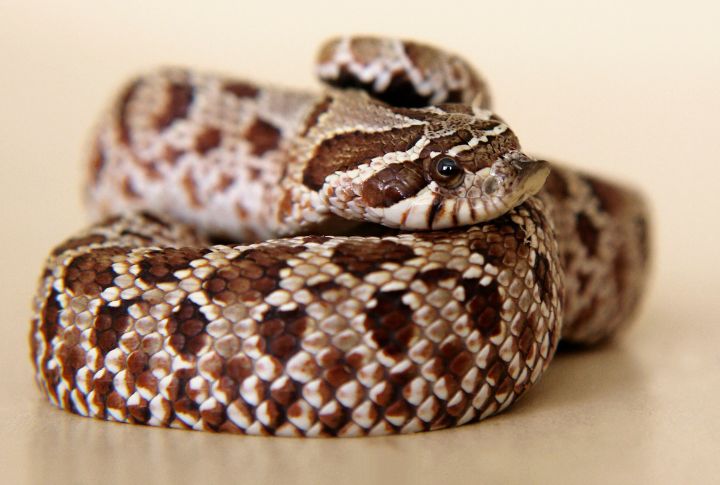
The Western Hognose Snake has various colors, including tan, brown, orange, and gray, often with dark patterns. It prefers dry areas such as grasslands and scrublands. Feeding primarily on small animals, the Western Hognose Snake plays a vital role in controlling pest populations. Due to its looks and harmless behaviors, people often keep it as a pet.
Northern Water Snake
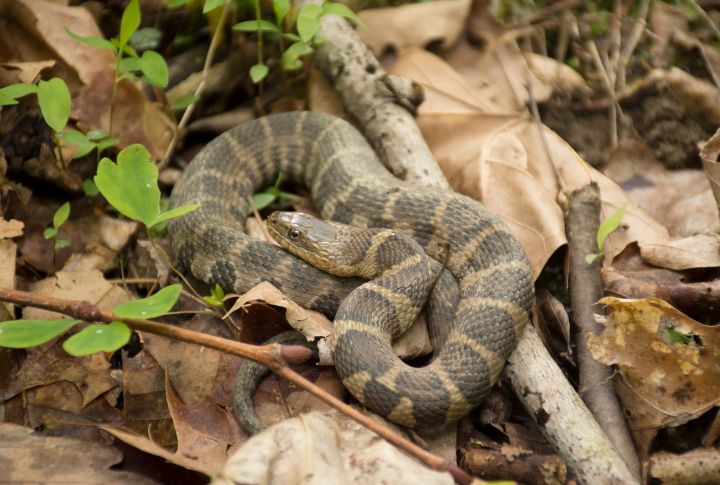
As its name suggests, the Northern Water Snake is often associated with rivers, streams, lakes, ponds, and marshes. It is active during the day and an excellent swimmer, usually seen basking on rocks or logs close to its watery home. It is an opportunistic feeder, preying on marine creatures like fish, frogs, salamanders, and rodents.
Prairie Kingsnake
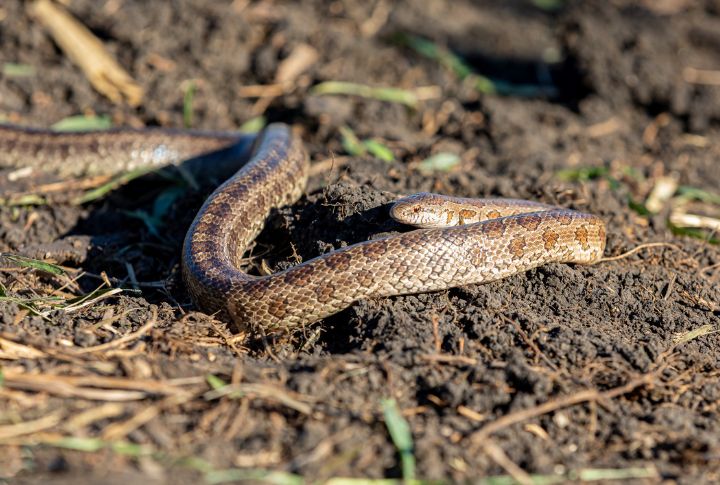
Prairie Kingsnakes are nonvenomous snakes native to the central and southeastern United States. Their scales are glossy, giving them an elegant appearance. Kingsnakes are constrictors, subduing their prey by coiling around them and squeezing until they suffocate. They don’t pose any threats to humans, but when provoked, they may emit a foul-smelling musk or flatten their bodies.
Eastern Milk Snake
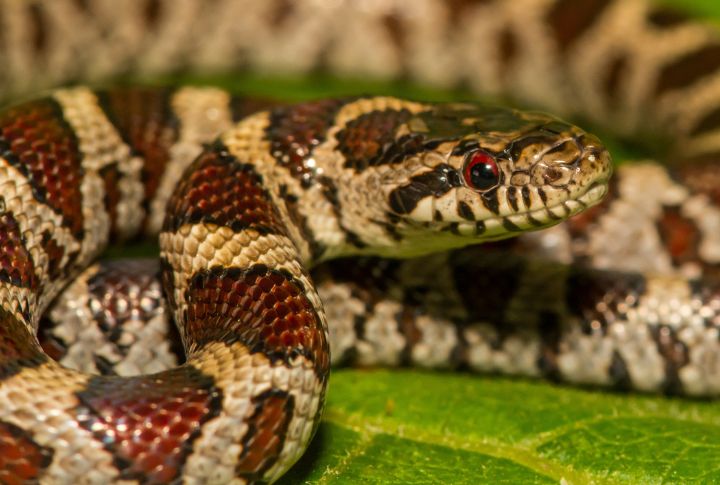
With its striking pattern of alternating red, black, and white bands, the Eastern Milk Snake is often mistaken for the venomous Coral Snake. This species is a nocturnal hunter, preying on tiny animals. They are docile and generally shy, preferring to flee when threatened. They may emit a foul-smelling musk or vibrate their tails when feeling threatened.

Comments
Loading…